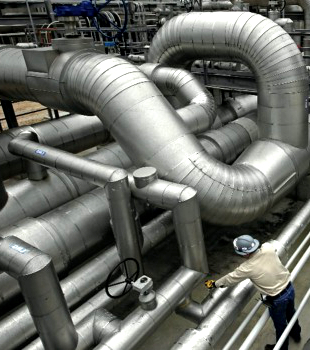CSIRO studies gas switch
 CSIRO has completed a detailed study of fugitive greenhouse gas emissions from CSG production.
CSIRO has completed a detailed study of fugitive greenhouse gas emissions from CSG production.
The project looked at greenhouse gas emissions of a CSG-LNG project in Queensland, and the relative climate benefits of using Queensland natural gas in place of thermal coal as fuel for generation of electricity in Australia.
Researchers were given the extremely rare opportunity to use of commercial-in-confidence data from a CSG to LNG project in the Surat Basin, Queensland to provide accurate estimates of whole of life greenhouse gas emissions associated with CSG-LNG operations in Australia.
The report found that greenhouse gas emissions associated with CSG production, compression, dehydration, water treatment and liquefaction represented 1.4 per cent of likely future production for the CSG-LNG project in question (576 PJ/year).
The activities that contributed most to emissions in the CSG-LNG supply chain were electricity use on-site for CSG extraction, and combustion of natural gas for electricity for LNG production.
Outside Australia, the primary activity contributing to emissions is the combustion of natural gas, which represents 83 per cent of total emissions when all processes from well head through liquefaction, shipping, regasification and combustion are considered.
Switching fuel from black thermal coal to Queensland coal seam gas for electricity generation using high efficiency closed cycle gas turbines in Australia - avoiding liquefaction, shipping and regasification - represents a potential reduction in greenhouse gas emissions of around 50 per cent.
“These results are consistent with other CSIRO studies in this region which suggest that the fugitive emissions component of the total greenhouse gas emissions identified in this latest study are at the lower end of the scale [around 1.4 per cent],” researcher Dr Damian Barrett said.
“The climate benefits of using natural gas in place of thermal coal for electricity generation are generally accepted when fugitive emissions are less than three per cent of total production.
“Replacement of coal-fired power by gas-fired generation, renewables and other low-carbon technologies is part of CSIRO’s vision for Australia's energy transition.
“Results of this latest research underline the potential climate benefits of using gas in place of coal to generate electricity, particularly when using high efficiency closed cycle gas turbines.”
The report is accessible here – Whole of Life Greenhouse Gas Emissions Assessment of a Coal Seam Gas to Liquefied Natural Gas Project in the Surat Basin, Queensland, Australia [pdf · 660kb]
Onshore unconventional emissions, explained from CSIRO on Vimeo.








 Print
Print